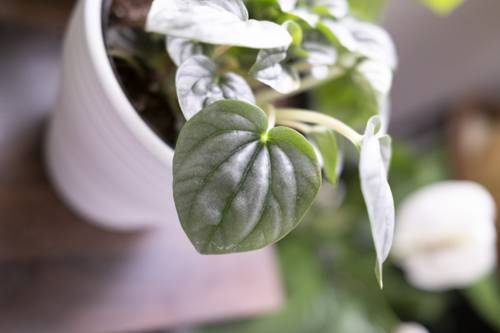
FAQ About Indoor Plant Rot Resistance

What is root rot in indoor plants?
Root rot is a common disease in indoor plants that occurs when the plant's roots are saturated with water for prolonged periods. This condition leads to the decay of the root system, preventing the plant from absorbing nutrients and water. Root rot is typically caused by overwatering or poorly drained soil and can ultimately kill the plant if not addressed.

How can I identify root rot in my indoor plants?
Root rot can be identified by several symptoms, including yellowing leaves, wilting despite adequate watering, stunted growth, and a damp, unpleasant smell emanating from the soil. When checking the roots, affected plants will have mushy, brown, or black roots instead of healthy, firm, white ones.

What are some indoor plants resistant to root rot?
Several indoor plants are known for their resistance to root rot. These include succulents like aloe vera and jade plants, ZZ plants (Zamioculcas zamiifolia), snake plants (Sansevieria), and pothos (Epipremnum aureum). These plants are generally more forgiving with watering and can thrive in less moist conditions compared to other species.

How can I prevent root rot in my indoor plants?
Preventing root rot involves proper watering practices and ensuring good soil drainage. Use pots with drainage holes, avoid overwatering, and allow the soil to dry between waterings. Incorporating a well-draining soil mix and using pots that fit the plant’s size can also help manage water retention.

What soil types are best for preventing root rot indoors?
For preventing root rot, it's crucial to use a well-draining soil mix. Cactus or succulent mixes are great options, as they typically contain sand or perlite that ensures proper drainage. Adding materials like coconut coir, pumice, or vermiculite can also help improve soil aeration and drainage.

Why does overwatering cause root rot in indoor plants?
Overwatering saturates the soil, cutting off oxygen supply to the roots. Roots need oxygen to function and grow, and without it, they begin to decay. Decayed roots can't absorb nutrients or water, leading to the symptoms of root rot.

How can I save a plant from root rot?
To save a plant from root rot, carefully remove it from its pot and inspect the roots. Trim away any decayed, brown, or mushy roots with sterilized scissors. Repot the plant in fresh, well-draining soil, and avoid overwatering moving forward. Ensure that the pot has proper drainage to prevent future issues.

Is there a way to make existing houseplants more resistant to root rot?
Improving drainage, adjusting watering schedules, and using the right soil are key to making existing houseplants more resistant to root rot. Additionally, consider using systemic fungicides or natural alternatives like cinnamon and hydrogen peroxide in moderation to combat fungal growth in the soil.

Can indoor plant rot resistance be affected by indoor humidity levels?
Yes, indoor humidity levels can affect plant health. High humidity can increase moisture levels in the soil, contributing to conditions that promote root rot. While some plants prefer higher humidity, most indoor environments should maintain balanced humidity to ensure soil moisture evaporates at a proper rate.

What are some common signs that an indoor plant is prone to root rot?
Indoor plants prone to root rot often exhibit signs like constantly wet soil, a persistent musty odor, and a general decline in health despite proper care. Plants with naturally fine roots or those sensitive to overwatering, like ferns and peace lilies, are more susceptible.

How does pot size contribute to indoor plant rot resistance?
Choosing the right pot size is critical for rot resistance. Pots that are too large can retain excess water, increasing the risk of root rot. A pot that is too small may dry out too quickly, leading to overwatering cycles. The pot should accommodate the plant with enough space for growth without excessive soil beyond the root ball.

Are there any specific watering techniques to prevent root rot in indoor plants?
Watering techniques such as the soak and dry method—allowing soil to dry out completely between waterings—can significantly reduce the risk of root rot. Additionally, bottom watering can ensure that water reaches the roots evenly and prevent moisture from sitting on the soil's surface.

Can adding perlite to soil mixes help to resist root rot?
Yes, adding perlite to soil can greatly improve drainage and aeration, essential for preventing root rot. Perlite is a lightweight, porous substance that helps keep soil loose and encourages water and air circulation, lowering the risk of over-saturation.

What role do drainage holes in pots play in preventing root rot?
Drainage holes are crucial for preventing root rot as they allow excess water to escape from the pot, preventing waterlogged soil. They ensure that the plant's roots don't remain submerged in water, which would otherwise lead to decay.

Can amendments like charcoal help prevent root rot in indoor plants?
Amendments such as activated charcoal can help prevent root rot by absorbing excess moisture and toxins, promoting healthier soil conditions. Charcoal also has antibacterial properties that can help reduce microbial growth that contributes to root rot.

How can I increase the rot resistance of tropical indoor plants that prefer moist soil?
For tropical plants that prefer moist soil, using a balanced soil mix that retains necessary moisture without becoming waterlogged is key. Ensure proper pot drainage, and consider using humidity trays or room humidifiers to maintain air moisture, rather than overwatering the soil.

What is the impact of temperature on root rot in indoor plants?
Temperature can affect root rot; cooler environments slow down water evaporation, increasing the risk of soil remaining too moist. Conversely, warm temperatures can accelerate drainage, sometimes requiring more frequent watering. Balance is essential to maintaining optimal soil moisture levels.

Are succulents more resistant to root rot?
Yes, succulents are generally more resistant to root rot due to their ability to store water in their leaves, which means they require less frequent watering. Their natural preference for well-draining soil conditions also makes them less prone to waterlogging issues.

How can using the wrong type of soil contribute to root rot of indoor plants?
Using the wrong type of soil—such as one that retains too much moisture—can lead to conditions favoring root rot. Heavy, compact soils hold water longer, depriving roots of oxygen and encouraging decay. Selecting a soil mix appropriate for the specific needs of indoor plants is critical.

What are some common misconceptions about preventing root rot in indoor plants?
A common misconception is that all indoor plants need to be watered on a regular schedule. In reality, watering should depend on the specific needs of the plant and the drying capacity of the soil. Another misconception is that larger pots are always better, but they can actually hold more water than needed, promoting rot.
